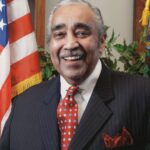
A group of history buffs from Roxbury and South Boston celebrated victory last Saturday with the installation of an historical marker commemorating the neighborhood’s pivotal role in the siege of Boston during the Revolutionary War.
The granite tablet serves as the final marker in a 300-mile trail that stretches from Fort Ticonderoga in New York, where Gen. Henry Knox picked up the 59 cannons that Gen. George Washington’s army would use in the siege of Boston, all the way to Dorchester Heights, a hill in what is now South Boston from which Washington’s cannons forced the British to withdraw from Boston.
In 1926 and 1927, the state of New York and Commonwealth of Massachusetts erected 56 plaques, one for each day that Knox and his troops guided the 60 tons of 18th-century artillery by ox-drawn sled through the frozen Hudson River valley and over the Berkshires to Cambridge, where Washington received them.
There, at Cambridge Common, the trail markers stopped. While a 115-foot tower was erected in South Boston in 1902 to commemorate the fort where the cannons ended their journey, Roxbury’s role in the decisive Revolutionary War chapter has gone without official recognition.
“It’s always been an afterthought,” said Michael Bare, a member of the South Boston Citizens Association who is chairman of the Evacuation Day Heritage Committee. Bare worked with the Roxbury Highlands Historical Society and the National Park Service and Roxbury activists to have the marker erected.
It was in Roxbury on the night of March 16, 1776, where 3,000 of Gen. John Thomas’ troops gathered and, under cover of darkness, conveyed the cannons the final two miles to Dorchester Heights.
When the sun rose the morning of March 17, 1776, British troops were greeted with the sight of sunlight reflecting off the cannons. That afternoon, at approximately 3:17 p.m., the British agreed to withdraw, having secured Washington’s guarantee they wouldn’t be fired upon.
The withdrawal is celebrated on March 17 each year in Suffolk County as the official holiday of Evacuation Day.
The new marker was installed at the corner of Roxbury Street and Malcolm X Boulevard. About 40 people turned out for last Saturday’s dedication, including representatives from South Boston and Roxbury and a contingent of Lexington Minute Men re-enactors.
Dudley Square Main Streets Executive Director Joyce Stanley said the collaboration between Roxbury and South End activists to secure the marker was significant.
“Boston, for many years, has been a city of tribes,” she said. “In a year like this, [the joint effort] shows what we, working together, can do. It’s a powerful story.”
In 2004, Bare helped the Prince Hall Masons document and install a plaque at the Castle Island site where Prince Hall and 13 other men were sworn in as the first African Americans accepted into the fraternal order of Freemasonry.
Last Saturday, Bare brought a contingent of South Boston children to the installation to symbolically present the statue to a contingent of Roxbury children.
The Minute Men re-enactors and historical society members began the day at the former site of the Roxbury High Fort, where the Cochituate Standpipe tower now stands atop Fort Hill. The re-enactors then marched to Roxbury Street towing a cannon atop a wheeled sled, accompanied by a drum-and-fife band.
Bare said he was inspired by reading Gen. Knox’s story while a sixth-grader at the Roger Clapp School in Dorchester.
“He was an amazing American hero,” Bare said. “A founding father.”







